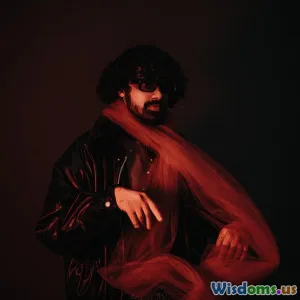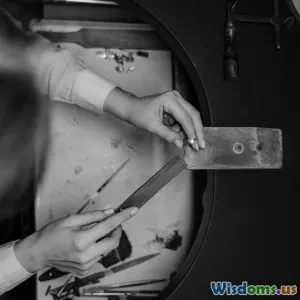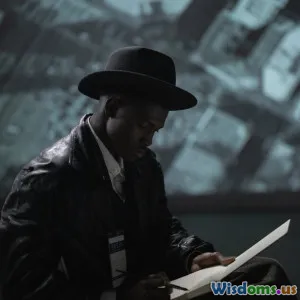
The Role of Sound in Film Storytelling
6 min read Explore how sound enhances film storytelling, creating emotion and depth that visuals alone cannot convey. (0 Reviews)
The Role of Sound in Film Storytelling
In the world of cinema, visual storytelling often takes center stage, with stunning imagery and compelling performances captivating audiences. However, sound is an equally crucial player in the storytelling process. From the subtle whispers of dialogue to the thunderous roars of action sequences, sound shapes our experience and understanding of a film. This article delves into the multifaceted role of sound in film storytelling, highlighting its importance in creating atmosphere, evoking emotions, and enhancing narrative depth.
The Elements of Sound in Film
Sound in film can be broadly categorized into three elements: dialogue, sound effects, and music. Each of these elements contributes uniquely to the storytelling process.
1. Dialogue
Dialogue is perhaps the most straightforward use of sound in film. It conveys character intentions, motivations, and plot developments. Skilled screenwriters craft dialogue that reveals personality traits and relationships, while actors bring it to life through their vocal delivery. The tone, pitch, and emotional inflection of dialogue can dramatically influence how audiences perceive a character or a situation. For instance, a calm, measured tone can convey authority, while a trembling voice might suggest fear or uncertainty.
2. Sound Effects
Sound effects are the auditory elements that enhance the realism of a film. From the rustling of leaves to the crash of thunder, these sounds create a backdrop that immerses viewers in the film's world. Sound designers work meticulously to craft these effects, often recording real-world sounds or creating them digitally. The placement and timing of sound effects can manipulate audience reactions, building tension or providing comic relief. For example, the iconic sound of a lightsaber in the Star Wars franchise is not just a flashy effect; it has become synonymous with the epic battles between good and evil.
3. Music
Music is perhaps the most emotive use of sound in film. A well-composed score can evoke an array of feelings, from joy to sadness, and can even serve as a narrative device in itself. Composers like Hans Zimmer and John Williams have mastered the art of creating themes that resonate with audiences long after the credits roll. Think of the haunting melody of Schindler’s List or the triumphant score of The Lion King—both pieces not only enhance the emotional impact of their respective films but also become integral to the storytelling.
The Psychological Impact of Sound
Research has shown that sound can significantly affect how people interpret visual information. For instance, studies have demonstrated that viewers often misinterpret scenes based on the accompanying sound. A light-hearted visual paired with ominous music can prompt feelings of anxiety, while a tense scene underscored by uplifting music might induce a sense of hope. This psychological interplay highlights how sound influences our emotional responses, shaping our understanding of the narrative.
Creating Atmosphere and World-Building
Sound also plays a crucial role in building the film's atmosphere. The ambient sounds of a bustling city, the chirping of birds in a serene forest, or the echo of footsteps in an empty hall all contribute to the viewer's immersion in the film's world. This auditory world-building is essential for establishing tone and setting. For instance, a horror film might use silence or dissonant sounds to create tension, while a romantic film might employ soft melodies to evoke warmth and intimacy.
The Role of Silence
Interestingly, silence is as powerful as sound in film. Strategic use of silence can heighten tension and emphasize dramatic moments. For example, in A Quiet Place, where sound is a matter of survival, the absence of sound becomes a critical element of storytelling, making viewers acutely aware of every creak and whisper.
Conclusion
In conclusion, sound is an indispensable element of film storytelling that enhances the narrative in profound ways. It shapes emotions, constructs worlds, and guides audience perceptions, often in ways that visuals alone cannot achieve. As filmmakers continue to explore innovative sound design techniques, the potential for sound to elevate cinema storytelling remains limitless. Whether you are a filmmaker, a film student, or an avid moviegoer, understanding the role of sound can deepen your appreciation for the art of film.
As you watch your next movie, pay close attention to the soundscape; you might find that it tells a story of its own.
Rate the Post
User Reviews
Popular Posts



















